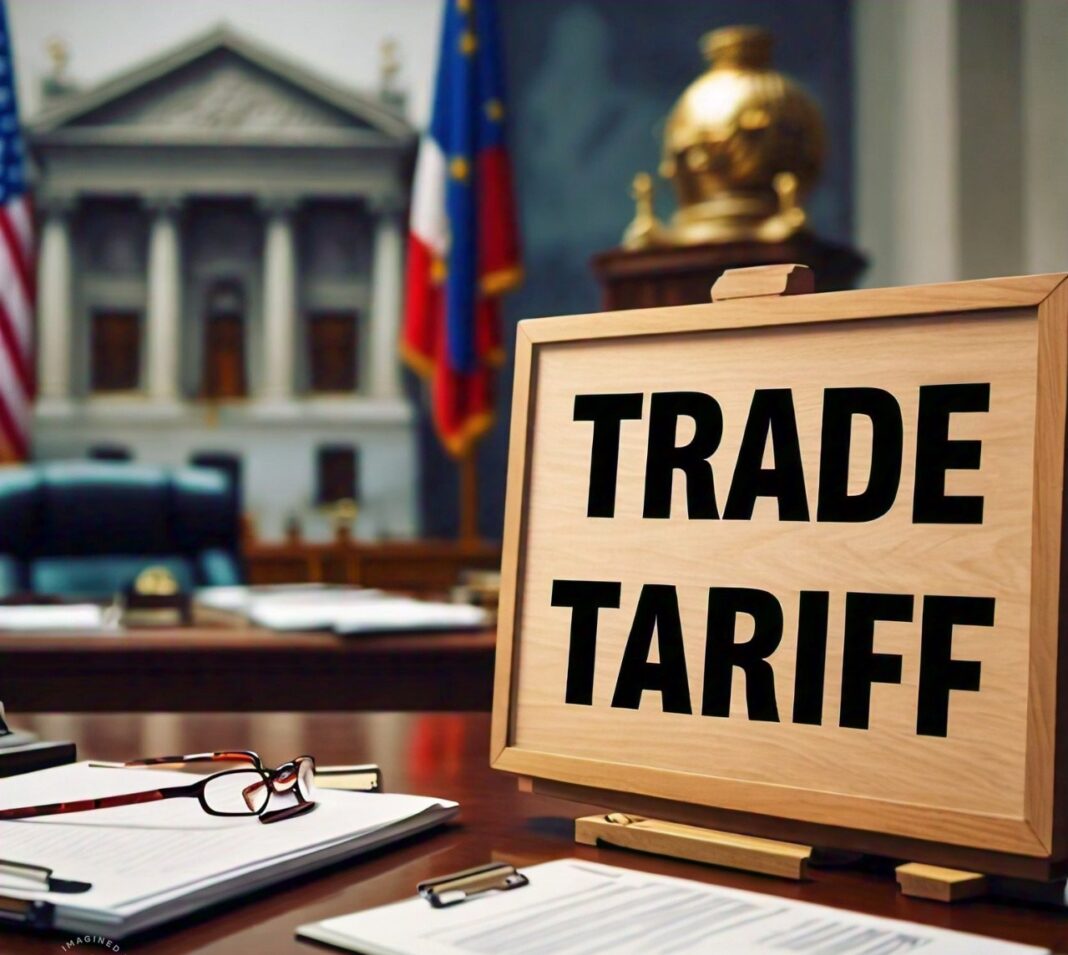Trade tariffs, also known as customs duties or import taxes, are financial charges imposed by governments on imported goods. These tariffs are designed to make foreign products more expensive relative to domestic products, aiming to protect local industries and generate revenue. While this policy tool can support national economic interests, it also has significant implications for global supply chains.
For supply chain managers, understanding the nuances of trade tariffs is critical. Trade tariffs affect various aspects of supply chain operations, from cost structures to logistical efficiencies. As businesses navigate the complexities of international trade, it becomes essential to grasp how tariffs impact not only the direct costs of goods but also the broader supply chain dynamics.
Why Understanding Tariffs Matters for Supply Chain Managers
- Cost Implications: Trade tariffs can significantly increase the cost of imported materials and products. This rise in expenses can affect overall profitability and pricing strategies. Supply chain managers need to comprehend these cost changes to make informed decisions about budgeting and cost management.
- Supply Chain Disruptions: Tariffs can lead to delays in product shipments and complications in the supply chain. Understanding these disruptions helps supply chain managers anticipate and address potential delays, ensuring smoother operations and reducing the risk of inventory shortages.
- Strategic Adjustments: To mitigate the impacts of tariffs, supply chain managers must develop and implement strategies such as sourcing alternatives and optimizing logistics. Knowledge of how tariffs influence supply chain operations allows for better strategic planning and adaptability.
Overview of Trade Tariffs
Types of Trade Tariffs
Trade tariffs can take various forms, each affecting international trade in different ways. Understanding these types is crucial for assessing their impact on supply chains.
- Ad Valorem Tariffs
- Definition: A percentage of the value of the imported goods. For example, a 10% ad valorem tariff means that the tariff amount is 10% of the total value of the goods.
- Impact: This type of tariff scales with the price of the goods, making higher-value imports more expensive. It can lead to significant cost increases for products with high values.
- Specific Tariffs
- Definition: A fixed fee based on the quantity, weight, or volume of the imported goods. For instance, a specific tariff might be $50 per ton of imported steel.
- Impact: This tariff imposes a set cost regardless of the value of the goods, which can disproportionately affect lower-value products or smaller shipments.
- Compound Tariffs
- Definition: A combination of ad valorem and specific tariffs. For example, a tariff might include a 5% ad valorem rate plus $20 per unit.
- Impact: Compound tariffs affect both the value and quantity of goods, leading to complex cost implications for businesses.
- Protective Tariffs
- Definition: Designed to shield domestic industries from foreign competition by raising the cost of imported goods.
- Impact: Protective tariffs can lead to higher prices for consumers and reduced competition, but they also provide local industries with a competitive edge.
- Retaliatory Tariffs
- Definition: Imposed in response to trade barriers set by other countries. These are often used as a negotiating tool in trade disputes.
- Impact: Retaliatory tariffs can escalate trade conflicts, leading to increased costs and disruptions in international supply chains.
Also Read: Best Roth IRA Accounts 2024
Historical Context
Understanding the historical evolution of trade tariffs provides insight into their current application and impact.
- Early Tariff Policies
- History: Trade tariffs have been used for centuries as a tool for economic protection and revenue generation. Early tariffs were often imposed to fund governments or protect nascent industries.
- 20th Century Developments
- Global Trade Agreements: The establishment of international trade organizations and agreements, such as the General Agreement on Tariffs and Trade (GATT) and later the World Trade Organization (WTO), aimed to reduce tariffs and facilitate global trade.
- Economic Shifts: During this period, many countries moved towards lower tariffs and freer trade policies to promote economic growth and international cooperation.
- Recent Trends
- Increased Tariff Rates: In recent years, there has been a resurgence of tariff measures, often driven by protectionist policies and trade disputes. Notable examples include the trade tensions between major economies such as the U.S. and China.
- Impact of Globalization: The rise of globalization and interconnected supply chains has made the effects of tariffs more pronounced, affecting global trade patterns and business strategies.
Current Trade Tariff Trends
Keeping abreast of current trends in trade tariffs helps supply chain managers anticipate and plan for future changes.
- Trade Wars and Disputes
- Recent Examples: Ongoing trade disputes, such as those between the U.S. and China, have led to significant tariff increases and trade barriers.
- Impact: These disputes often result in unpredictable tariff changes, creating uncertainty for businesses and requiring agile supply chain strategies.
- Shifts in Trade Policies
- Policy Changes: Governments are increasingly using tariffs as a tool for negotiating trade agreements and addressing economic imbalances.
- Effect: Changes in trade policies can lead to sudden and significant impacts on international supply chains.
- Regional Trade Agreements
- New Agreements: Regional trade agreements, such as the USMCA (United States-Mexico-Canada Agreement), often include provisions for tariff reductions and trade facilitation.
- Impact: These agreements can alter tariff structures and create new opportunities or challenges for businesses operating in multiple regions.
Also Read: The Impact of Trade Deficits on National Economies

Impact of Trade Tariffs on Supply Chain Operations
Cost Increases
Trade tariffs can significantly affect the cost structure of businesses by increasing expenses related to importing goods. Understanding these cost increases is essential for supply chain managers to manage their budgets effectively.
- Direct Cost Increases
- Tariff Charges: When tariffs are imposed, the cost of imported goods rises. For instance, a 15% tariff on electronics means that the cost of importing these items increases by 15%, directly affecting the expense line of the supply chain.
- Impact on Product Pricing: Higher import costs often lead businesses to raise the prices of their products to maintain profit margins. This can affect competitiveness in the market, especially if competitors are not subject to the same tariffs.
- Indirect Costs
- Logistics and Transportation: Tariffs can affect logistics costs, as increased import duties may lead to changes in transportation routes or methods. Businesses might need to find alternative shipping options or adjust their logistics strategies to manage these costs.
- Inventory Management: Higher costs can impact inventory management strategies. For example, increased costs might lead to larger inventories being held to mitigate the impact of future tariff increases or supply disruptions, which can result in higher storage and handling costs.
Supply Disruptions
Trade tariffs can also lead to disruptions in the supply chain, affecting the smooth flow of goods and materials.
- Import Delays
- Customs Processing: Higher tariffs can lead to increased customs processing times, as customs authorities may scrutinize shipments more closely. This can cause delays in receiving goods, impacting production schedules and delivery timelines.
- Trade Restrictions: Tariffs can lead to trade restrictions or quotas that limit the volume of goods that can be imported. These restrictions can disrupt supply chains by creating shortages of critical materials or components.
- Supplier Reliability
- Supplier Adjustments: Suppliers may face financial strain due to increased tariffs, which can affect their ability to deliver goods consistently. This can lead to reliability issues, requiring businesses to find alternative suppliers or renegotiate terms.
- Cost Pass-Through: Suppliers may pass on the increased costs of tariffs to their customers. This can further impact the overall cost structure of the supply chain and affect budgeting and financial planning.
Further Read: Why Emerging Markets Are the Next Frontier in International Trade

Pricing Strategies
Trade tariffs can influence how businesses approach pricing strategies and overall profitability.
- Price Adjustments
- Cost Passing: Businesses may need to pass on the increased costs of tariffs to consumers through higher prices. This strategy can help maintain profit margins but might affect sales if customers are sensitive to price increases.
- Price Competitiveness: Higher prices due to tariffs can impact a company’s competitive position in the market. Businesses must balance the need to cover increased costs with maintaining their competitive edge.
- Cost Absorption
- Margin Compression: In some cases, businesses may choose to absorb the increased costs of tariffs rather than passing them on to customers. This approach can protect customer relationships and market share but may lead to reduced profit margins.
- Efficiency Improvements: To offset the impact of higher tariffs, businesses may invest in efficiency improvements, cost-saving measures, or supply chain optimizations. This can help mitigate the financial impact of tariffs and improve overall operational efficiency.
Mitigation Strategies for Supply Chain Managers
Alternative Sourcing
Finding alternative sources of materials or products is a key strategy for mitigating the impact of trade tariffs on supply chains.
- Evaluating New Suppliers
- Supplier Research: Identifying potential suppliers in countries with lower or no tariffs can help reduce costs. Evaluate suppliers based on their ability to meet quality standards, delivery timelines, and cost-effectiveness.
- Supplier Diversification: Diversifying the supplier base can reduce dependency on any single supplier or country, thereby mitigating the risk of tariff-related disruptions.
- Local Sourcing
- Domestic Suppliers: Shifting to domestic suppliers can eliminate the need for international tariffs and potentially reduce logistics costs. Evaluate local suppliers for their ability to meet production needs and competitive pricing.
- Regional Sourcing: Consider sourcing from nearby countries with favorable trade agreements or lower tariff rates. This can reduce shipping times and costs, while also minimizing tariff impacts.
Cost Management
Effective cost management strategies can help mitigate the financial impact of increased tariffs.
- Negotiating with Suppliers
- Contract Adjustments: Renegotiate contracts with suppliers to share the burden of increased tariffs or secure better pricing. Explore options for long-term contracts or bulk purchasing to lock in lower rates.
- Cost Sharing: Discuss potential cost-sharing arrangements with suppliers to manage the increased expense of tariffs more effectively.
- Cost Reduction Initiatives
- Process Optimization: Implement process improvements and efficiency measures to reduce overall costs. This can include streamlining operations, reducing waste, and enhancing productivity.
- Technology Integration: Invest in technology that can optimize supply chain processes, such as inventory management systems or automation tools, to offset increased costs and improve efficiency.

Supply Chain Redesign
Redesigning the supply chain can help businesses adapt to tariff changes and maintain operational efficiency.
- Supply Chain Mapping
- Mapping and Analysis: Conduct a thorough analysis of the supply chain to identify potential vulnerabilities and areas affected by tariffs. This can help in designing a more resilient and flexible supply chain.
- Redesign Options: Explore different supply chain configurations, such as shifting production locations or altering distribution networks, to mitigate tariff impacts.
- Inventory Strategies
- Strategic Stockpiling: Consider stockpiling critical materials or products to mitigate the impact of potential supply disruptions caused by tariffs. However, balance this with the costs of holding inventory.
- Just-In-Case vs. Just-In-Time: Evaluate the trade-offs between just-in-time inventory practices and just-in-case strategies. While just-in-time can reduce inventory costs, just-in-case can provide a buffer against supply disruptions.
Technology and Automation
Leveraging technology and automation can enhance supply chain efficiency and reduce the impact of tariffs.
- Supply Chain Management Software
- Advanced Tools: Implement supply chain management software that provides real-time visibility, analytics, and forecasting capabilities. This can help in better managing inventory, optimizing logistics, and responding to tariff-related changes.
- Integration: Ensure that the software integrates with other business systems to provide a cohesive view of the supply chain and streamline operations.
- Automation Solutions
- Automated Processes: Invest in automation solutions for processes such as order fulfillment, inventory management, and procurement. Automation can increase efficiency, reduce errors, and lower operational costs, helping to offset the impact of tariffs.
- Robotic Process Automation (RPA): Utilize RPA for repetitive tasks and data management, freeing up resources to focus on strategic initiatives related to tariff mitigation.
Regulatory Compliance and Risk Management
Staying Compliant
Ensuring compliance with trade tariffs and related regulations is crucial for avoiding legal and financial penalties.
- Understanding Tariff Regulations
- Regulatory Updates: Stay informed about the latest changes in tariff regulations and trade policies. Regularly review updates from relevant authorities, such as customs agencies and trade departments, to ensure compliance.
- Documentation Requirements: Maintain accurate and complete documentation for all import and export transactions. This includes invoices, customs declarations, and proof of compliance with tariff regulations.
- Customs Compliance
- Customs Brokers: Work with experienced customs brokers to navigate complex tariff regulations and ensure proper classification and valuation of imported goods.
- Audit Readiness: Prepare for potential customs audits by implementing robust internal controls and record-keeping practices. Regularly audit your own compliance processes to identify and address any potential issues.
Risk Assessment
Identifying and managing risks associated with trade tariffs is essential for maintaining supply chain stability.
- Risk Identification
- Vulnerability Analysis: Assess how tariffs impact various aspects of your supply chain, including costs, supplier reliability, and logistical efficiency. Identify areas where the supply chain is most vulnerable to tariff changes.
- Scenario Analysis: Conduct scenario planning to evaluate the potential impact of different tariff scenarios on your supply chain. This helps in understanding how various tariff rates and trade policies could affect operations.
- Risk Mitigation Strategies
- Contingency Planning: Develop contingency plans for potential supply chain disruptions caused by tariffs. This includes identifying alternative suppliers, adjusting inventory strategies, and having backup logistics plans in place.
- Insurance Options: Explore insurance options that cover risks related to tariffs and trade disruptions. This can provide financial protection and support in case of unforeseen challenges.
Scenario Planning
Creating and implementing scenario plans helps businesses prepare for and respond to changes in trade tariffs.
- Developing Scenarios
- Best-Case and Worst-Case Scenarios: Develop scenarios that account for various potential changes in tariff policies, from favorable outcomes to worst-case scenarios. This helps in understanding the range of possible impacts on the supply chain.
- Strategic Responses: For each scenario, outline strategic responses and actions to mitigate risks and capitalize on opportunities. This includes adjusting sourcing strategies, modifying logistics plans, and reallocating resources.
- Monitoring and Adaptation
- Regular Reviews: Continuously monitor changes in trade policies and tariff regulations to update your scenario plans as needed. Stay agile and be prepared to adapt strategies based on the latest information and market conditions.
- Feedback Loops: Implement feedback loops to assess the effectiveness of your scenario plans and make adjustments based on real-world outcomes and experiences. This helps in refining strategies and improving overall resilience.
Also Read: How Trade Sanctions Are Affecting Global Markets
Conclusion
Summary of Key Points
Trade tariffs can significantly impact supply chain operations by increasing costs, causing supply disruptions, and influencing pricing strategies. Understanding the types and historical context of tariffs, as well as their current trends, is essential for supply chain managers. Key points include:
- Cost Increases: Tariffs raise the cost of imported goods, impacting both direct and indirect expenses.
- Supply Disruptions: Tariffs can lead to delays and reliability issues in the supply chain.
- Mitigation Strategies: Effective strategies include alternative sourcing, cost management, supply chain redesign, and leveraging technology.
- Regulatory Compliance: Staying compliant with tariff regulations and managing risks are crucial for maintaining smooth operations.
- Future Outlook: Preparing for future changes in tariff policies through strategic planning and continuous monitoring is essential for resilience.
Actionable Insights
To navigate the complexities of trade tariffs and their effects on supply chains, supply chain managers should:
- Implement Cost Management Practices: Regularly review and adjust cost management strategies to account for tariff impacts. Negotiate with suppliers and explore cost-reduction opportunities.
- Develop and Execute Mitigation Strategies: Identify alternative suppliers, optimize supply chain operations, and invest in technology to enhance efficiency and reduce costs.
- Stay Informed and Compliant: Keep up with regulatory changes, ensure compliance with tariff regulations, and prepare for audits.
- Engage in Scenario Planning: Create and update scenario plans to address potential tariff changes and adapt strategies based on real-time information.






